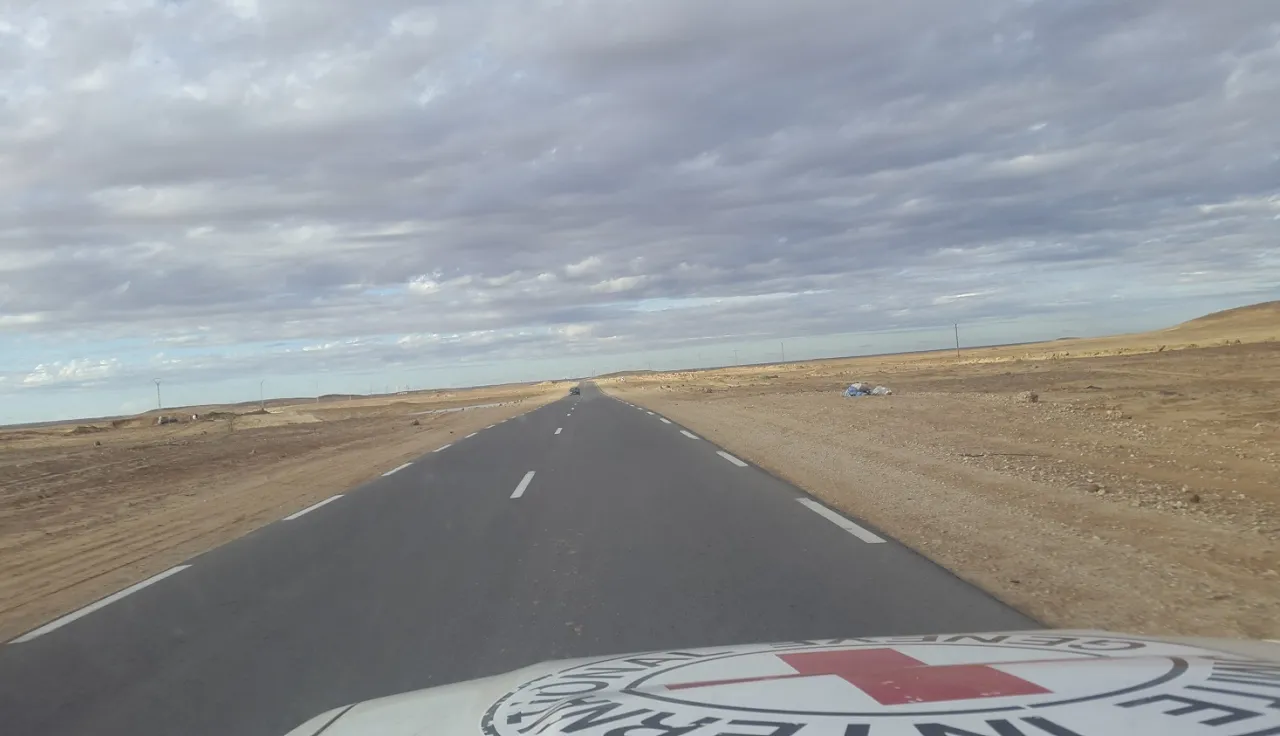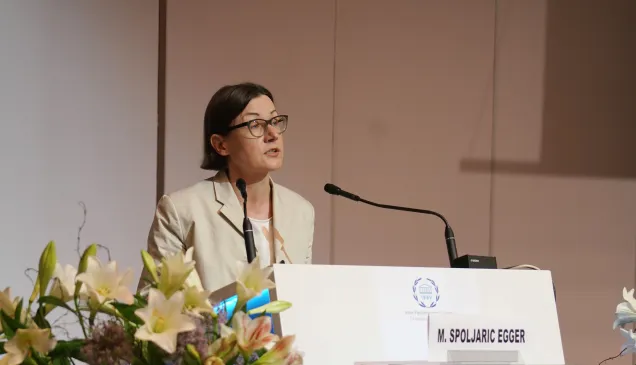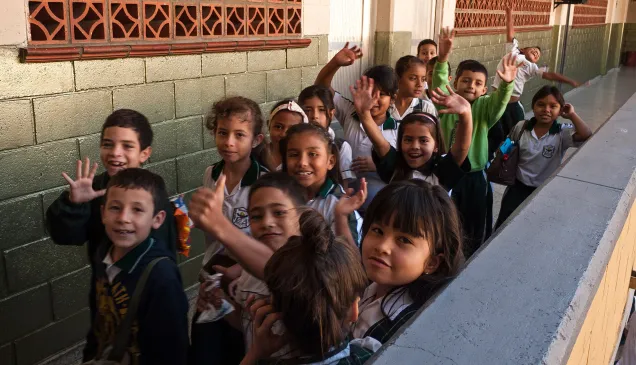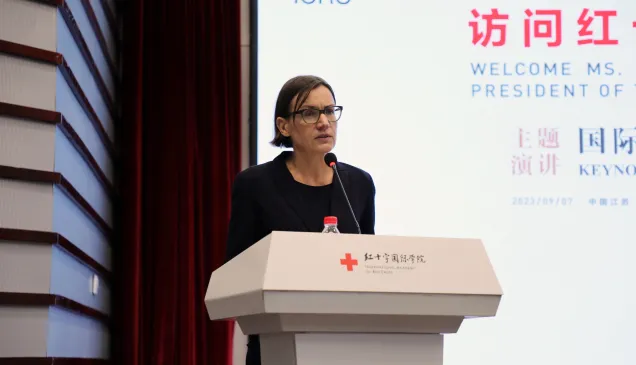Speech given by Peter Maurer, president of the ICRC, 14 November 2015, Algiers, Algeria
I would like to warmly welcome you to the Ninth Senior Workshop on International Rules Governing Military Operations (SWIRMO). My special thanks go to the Algerian government and authorities, who have offered their generous support to allow us to come together here today. I am especially grateful to President Bouteflika and Vice-Minister of National Defence General Gaid Salah, who have personally made every effort to ensure that this meeting is a success.
This ninth edition of the SWIRMO is breaking new ground: it is the second time that we're gathering on the African continent and the first time that the workshop is being held in an Arabic-speaking country.
Every time I come to Algeria, I am humbled by the memory and work of Emir Abdelkader. While the ICRC looks back on a history spanning more than 150 years since the inception of modern international humanitarian law, the spirit of the law was by no means new when Henry Dunant first founded the organization and thereby laid the groundwork for the adoption of the Geneva Conventions.
Years before Henry Dunant came across the battlefield of Solferino, Emir Abdelkader noted the importance of protecting humanity in the midst of war, of treating prisoners humanely. It was a decree by Emir Abdelkader in 1843 that led to the protection of captured combatants during the French-Algerian war. They gained the status of prisoners of war, rather than being killed. This spirit is what binds the ICRC and Algeria closely together, through the shared conviction of Emir Abdelkader and Henry Dunant that anybody who is not taking part in warfare, whether a civilian or a wounded soldier, deserves particular protection, and must be treated humanely, at all times. This conviction has become a defining notion of modern international humanitarian law, it became the original distinction between combatant and non-combatant.
Today, I would like to talk to you about some of the key characteristics of the current humanitarian operating environment in armed conflicts, of the legal and practical challenges we encounter, and of the common interest of the ICRC and armed forces in this highly dynamic situation.
Today's operating environment for the military and humanitarians alike is dramatically more complex in terms of battlefield dynamics, with greater fragmentation and multiplicity of actors than ever before. Today, armed conflicts the world over are producing dramatic humanitarian consequences, on a scale unseen since World War II. In many instances, armed actors flout international humanitarian law (IHL), the basic rules that regulate the use of force during armed conflict, often deliberately targeting civilians and civilian objects during military operations and forcing thousands to flee their homes and communities.
The increased complexity of our working environment is most clearly seen in the Middle East. There are, for example, more armed groups operating in Syria and Libya today than at any time between World War Two and the beginning of the Arab Spring. This proliferation is not, however, limited to the Middle East. In East and South Asia, for instance, the number of groups involved in non-international armed conflicts has quadrupled within the last decade. The majority of these groups are small-scale and organized into loose and shifting alliances. This increases the number of armed groups we must negotiate with to secure humanitarian access, to reach the people suffering from armed conflict.
Moreover, while numerous non-State armed groups have long aspired to statehood, the number of fragile contexts in North Africa and the Middle East has led to a substantial increase in the number of communities living under the control of armed groups. As humanitarians, we build our negotiations on this reality of an increasingly complex landscape of armed actors with State-like functions.
Today's battlefield dynamics and the myriad number of armed actors has naturally led to States adapting their responses. In recent years we have therefore witnessed a decrease in the large scale deployment of conventional armed forces. In their place, we are seeing a more 'light footprint' warfare, with the deployment of special forces in partnered operations and the use by States of proxies. There is a greater reliance on new technologies, new weapons platforms, such as drones, and cyber, and a proliferation of train and equip programmes.
In many contexts, the international community has come together to protect civilians caught up in endless cycles of violence through the mandating of multilateral peacekeeping operations.
Whether under United Nations, NATO, or African Union leadership, the legal and normative environments of peace operations are often difficult to interpret at the level of their operations on the ground. However, recent emphasis on the use of armed force in peace operations can lead to peacekeepers themselves becoming parties to an armed conflict, and therefore bound by international humanitarian law. International organizations conducting peace operations and countries contributing troops must act to guarantee that their personnel properly respect IHL and other relevant legal norms, and that they respect the space for neutral, independent and impartial humanitarian action alongside their own work in this field. It is of paramount importance that peacekeepers receive adequate training in international humanitarian law and other relevant norms prior to their deployment, and that militaries contributing troops to peace operations integrate their international legal obligations into their deployed units' doctrine.
All of the above developments in the way today's wars are fought have consequences. These can include human suffering, and therefore humanitarian needs. It is our joint responsibility to ensure that IHL is respected under all circumstances, to limit the suffering of people affected by armed conflicts.
SWIRMO has been designed to allow for a better understanding and application of IHL in operational planning, in a complex and rapidly evolving environment. The course this week will primarily focus on situations of warfare, where the laws of armed conflict are specifically designed to protect and assist civilians not participating directly in hostilities. Much of the course will focus on core IHL principles such as distinction, precaution and proportionality. We will engage with you on your decision-making processes and on the adaptability and relevance of your rules of engagement, and we will work with you on finding the right balance between humanity and military necessity throughout the operation.
In addition, so as to reflect today's conflict tapestry, a specific section of this course also examines growing modes of urbanization that will continue to produce humanitarian consequences for civilians and operational challenges for the State's security forces. Indeed, since 2008, more people are living in cities than in rural settings and it is estimated that by 2050 that figure will rise to 70% with some regions, such as South America, reaching 92%.
In the light of these trends, many States will have to confront growing levels of urban violence that lie below the threshold of an armed conflict, but where the potential humanitarian consequences and general insecurity can be just as severe or even worse. Faced with these growing challenges, States are increasingly resorting to armed forces working hand in hand with law enforcement, and this in environments that are all but predictable. These security forces must be trained and equipped differently, think differently, resort to the use of force differently, and apply international human rights law as opposed to the laws of armed conflict.
This SWIRMO course will allow you to analyse and manage the legal, practical and operational constraints and dilemmas that both armed forces and the police must face in conducting joint law enforcement operations. This is a tremendous challenge, which should prompt both States and humanitarian organizations, such as the ICRC, to work together in ensuring the protection of the general population and the safety of the security forces in urban settings.
Allow me to highlight some of the legal and practical challenges that will not necessarily be addressed in this week's SWIRMO, but on which the ICRC is working extensively with all of your countries.
In continually evolving dynamics of warfare, fuelled equally by new weapons and new methods, we sometimes encounter the outer limits of the traditional interpretation of international humanitarian law. We have tried to clarify the legal arguments related to specific operational challenges, because the laws of war, much like war itself are a living, growing body.
Every four years, the ICRC publishes a report entitled International humanitarian law and the challenges of contemporary armed conflicts. A new edition is due to be released and distributed to States in the coming weeks, on the occasion of the 32nd International Conference of the Red Cross and Red Crescent. This document highlights a number of areas where the interpretation of the legal framework must be reexamined in the light of current developments:
For instance, the important question of determining the beginning and end of an armed conflict, whether international or non-international. In an age where international armed conflicts are decreasing, non-international armed conflicts increasing, and formal peace accords have all but disappeared, the classification of a conflict poses a legal challenge.
The same is true for the territorial scope of armed conflict and therefore of IHL: is IHL restricted to the 'battlefields' or does it apply to the entire territories of the parties to an armed conflict? Does it apply outside the territories of the parties, i.e. in the territories of neutral or non-belligerent States? Again, the reality is complex, and constantly evolving. While it is generally accepted that IHL applies to the entire territory of States involved in a conflict, including territorial sea, waterways and national airspace, its applicability in the territory of non-belligerent States is much more controversial.
States have over the last decades been increasingly preoccupied by so-called terrorist acts, which have led to a wealth of counterterrorism measures. There is no doubt that it is legitimate to take responsive action to ensure State security. However, in doing so, it is indispensable to maintain the safeguards protecting human life and dignity laid down in IHL and IHRL but also to avoid blurring the lines between armed conflict and terrorism, with potentially adverse effects on IHL. While the legal frameworks governing terrorism and IHL have some common ground – IHL does expressly prohibit most acts that are criminalized as terrorist in domestic legislation and international conventions dealing with terrorism – the two legal regimes remain fundamentally different, with distinct rationales, objectives and structures, the most noteworthy of which is that IHL distinguishes between acts of violence that can be considered lawful or unlawful, while any act of violence designated as terrorist is always unlawful.
Another issue of grave concern, and which leads to disastrous suffering, is the use of explosive weapons in populated areas. The ICRC maintains that the use of such weapons that have wide area effects should be avoided in urban areas, despite the absence of an express legal prohibition but based on the likelihood of indiscriminate effects.
The list of legal challenges that are echoed in operational challenges, in the interface between armed forces, law and security enforcement, and humanitarian organizations goes beyond these few examples. The legal protection of health facilities and personnel is regularly disregarded in armed conflicts around the world; access to affected populations for humanitarians is hindered or severely impeded; there are specific challenges to ensuring the legal protection of persons detained in the context of non-international armed conflicts, notably regarding the conditions of detention, particularly vulnerable detainees, grounds and procedures for internment, and detainee transfers. The ICRC has responded to the mandate of the last International Conference of 2011, when States and other members of the Red Cross and Red Crescent Movement tasked us with facilitating further research and discussion with States, to provide options and recommendations to strengthen the legal protection of persons deprived of their liberty.
I am convinced that there is substantial common interest between us as humanitarians and the armed forces; we are both disposed to find practical solutions to today's challenges, and we are willing to share our respective experiences to manage the dilemmas generated by the two – at times contradictory – imperatives of military necessity and protection as priority.
The underlying principles of distinction, proportionality and precaution must not be only a theoretical framework but also the working principles of armed forces in today's ultra-complex environment, offering maximum guidance to those engaged in combat operations. War does not stop at the battlefield. The ripple effects of the destabilization brought by armed conflict and violence have, regionally, nationally and internationally, include mass migration and total system failures due to conflict and destruction, at times wiping out decades of development, infrastructure achievements and thereby communities' very foundations of existence, such as drinking water and electricity infrastructure.
I hope that the legal clarifications will prove useful in your discussions of practical issues. We are eager to listen to your experiences and answer your questions in open discussions. Your willingness to engage and contribute to the discussions and exercises of the next few days will make all the difference.




